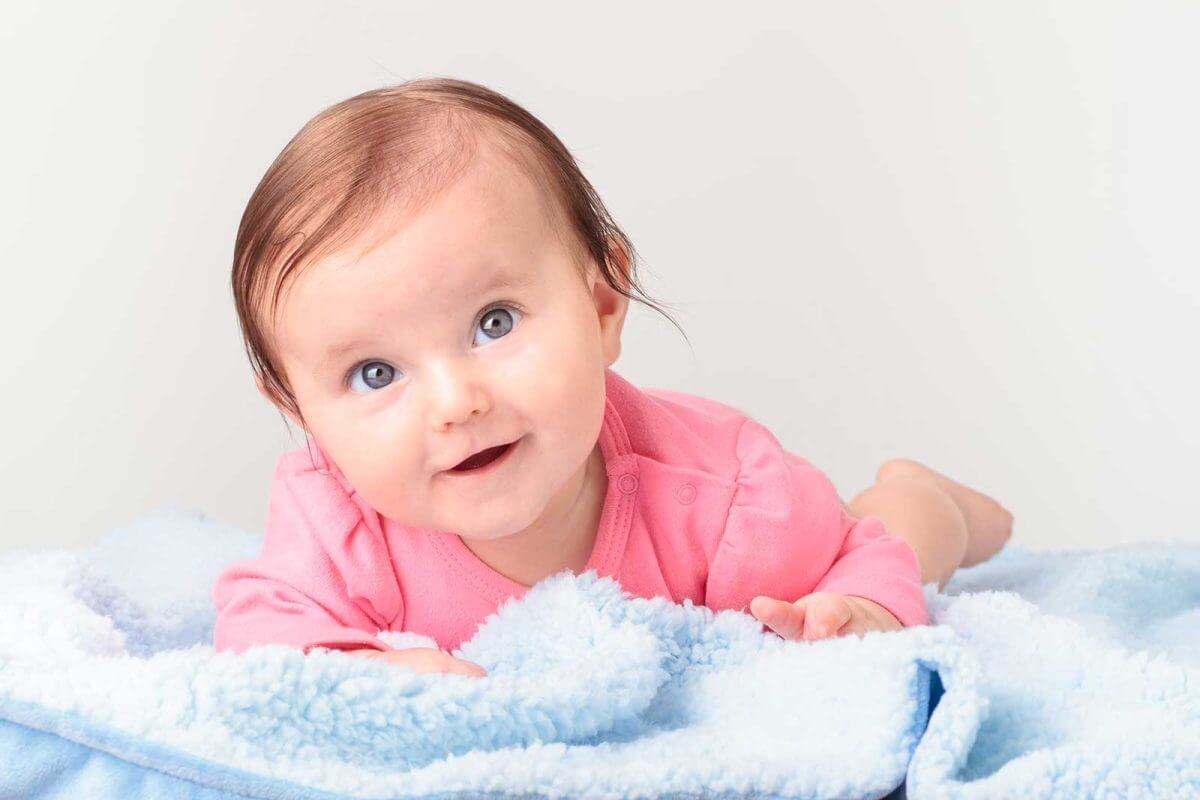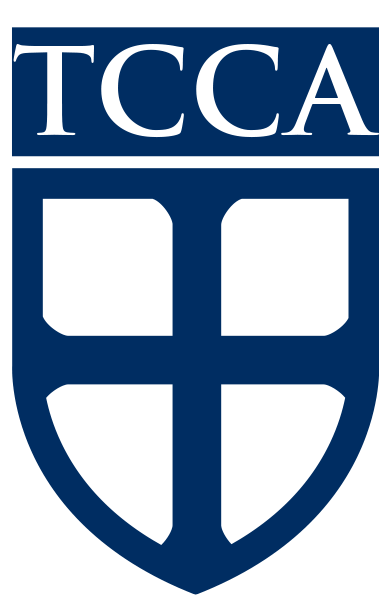Infant Program
Your baby’s first year is an exciting time with a lot of exploration and discovery. We offer low student/teacher ratios so that our teachers are able to provide one-on-one attention during this important time of growth and development. This allows infants to develop a trusting relationship with their caregiver and to grow as separate individuals in a loving and nurturing Christ-centered environment.
Research shows that experiences which involve sensory and motor investigations, as well as social interaction, help to build brain connections. Therefore, our teachers are required to develop weekly plans that are designed to help develop your child’s sense of sight, sound, and touch.

Each infant will be cared for based on the schedule identified by the parent. As the development of each child increases, the staff at the Treasure Coast Christian Academy preschool will adjust the routine to meet the need of each individual child.
Program Features
- Low student to teacher ratio.
- Nurturing responsive care in a Christ-centered environment.
- Developmentally appropriate activities, materials, and toys.
- Focus on cognitive, sensory and motor skills through play and activities.
- Regular communication between teachers and parents to stay informed about your child’s day.
Criteria to enter an Infant Program
- Infants must be at least 6 weeks old.
- All age appropriate immunizations must be current.
FAQS
Navigating the first year of your child’s life can be both exciting and challenging. All the new milestones can be tricky to navigate, especially in a group care setting. At Palm Beach Christian Academy, it is our goal to partner with parents to help ensure that the early, most formative years are as smooth and seamless as possible. In our Infant program, our goal is to create rooms of closely aged children who can hit milestones at a similar pace to decrease the stress on the class as a whole, as well as ensure that children are reaching goals appropriately.
The following is a guide that can be used as a launching pad during our Infant program:
2-3 months of age:
- Bring in your child’s schedule. List out the time they typically eat, sleep, play and nap.
- Teachers will work with your child’s schedule during this time to ensure a smooth transition into school.
3-6 months of age:
- Teachers will take your child’s natural rhythms and the class schedule into account when planning a school routine for eating and sleeping. Nap times will be scheduled for all children near the same times so that they may all sleep peacefully.
- Typically a child will eat between 3-4 hours, while taking a nap approximately 1 hour to 1 ½ hours before the next feeding.
- Children will play between feedings and eat when waking from nap to encourage going to sleep on their own.
6-9 months of age:
- Begin introducing pureed baby foods (if not already).
- Parents and teachers will work to develop a schedule for eating food and drinking milk (formula or breast milk).
- Ideally the child will eat food after bottle is given and begin to develop snack times.
- Parents and teachers will begin to introduce a typical morning and afternoon nap that is approximately the same time each day.
9-11 months of age:
- Children will be introduced to self-feeding techniques. Some self-feeding skills are:
- Holding a bottle in high chair
- Begin eating finger foods (if not already)
- The goal at this age is for the child to be self-feeding at least 25% of his or her food.
- Children will be taking a consistent morning and afternoon nap (if not already).
- Signs of wanting/needing to drop his or her morning nap:
- Waking early from a nap (either morning or afternoon – or both)
- Taking longer than 20-30 minutes to get to sleep and not sleeping as long as usual
- Once your child begins walking consistently, they need to wear closed-toe shoes to class.
12-15 months of age:
- Children should be self-feeding approximately 50% of meals.
- This includes, but is not limited to:
- Holding bottle (if 12 months or under).
- Food should be cut up into bite sized pieces by parent.
- Lunches should come prepared for one day at a time, in a lunchbox, with an ice pack.
- Ideal time to consume lunch is within 30 minutes. However, this can be extended for infants.
- To prepare for the toddler class schedule, aim for lunch to be between 11:00 am – 12:00 pm.
- Transition to a one nap schedule
- At 12 months, children can change from sleeping in a crib to a crib mattress.
- Ideal nap time is 12:30 pm - 2:30 pm.
- Work slowly towards dropping morning nap by shortening nap by 15 minutes at a time.
- Moving lunch up to 11:00 am will help keep children awake longer.
- Teachers will utilize late morning walks and introduce outdoor playtime while students adjust out of the morning nap schedule.
- Teachers will utilize late morning walks and introducing outdoor playtime while they adjust out of the morning nap schedule.
Fruits: Cut to Bite Size
Apple
Bananas
Grapes
Melon
Peaches
Pears
Pineapple
Veggies: Cut to Bite Size
Beans
Carrots
Tomatoes
Green Beans
Mixed Vegetables
Peas
Well-cooked Potatoes
Meats: Cut to Bite Size
Chicken
Ham
Turkey
Meat Sticks
Bread Group: Cut to Bite Size
Muffins
Cereals
Crackers
Baby Sleep Help: How to Wean Your Child From the Bottle
by Kim West
Tough as it might seem to say bye-bye to the bottle for both of you (it comforts him, it makes things easy for you), it’s important to start the process sometime after your child’s first birthday, with the goal of having him completely weaned by 15 months.
Why You Should Wean Your Child From the Bottle?
- Toddlers are more likely to get attached to things between 15 and 18 months. A toddler who’s still attached to a bottle will only latch on tighter if he’s allowed to have it as a source of comfort during this critical period. It’s better to encourage other attachments, such as a blanket, stuffed animal, or toy.
- His budding pearly whites are at stake. This is especially true if you let your child walk around with his bottle, drink from it between meals and snacks, or have it at bedtime without brushing his teeth before he nods off. Healthy as it is, milk is full of sugars that can cling to budding teeth and cause decay (which can ultimately affect adult teeth as well). It’s even worse if he’s drinking juice from a bottle. Giving a bottle to a toddler at bedtime and letting him fall asleep before you brush his teeth is an invitation to decay.
- It’ll ruin his appetite. Many children over 12 months will fill up on milk if they take it from a bottle. For example, toddlers who’re used to sucking down a 6- or 8-ounce bottle first thing in the morning aren’t likely to eat much breakfast. But at this age, they need other foods besides milk to be nourished. Kids can also literally drink faster from a bottle than from a sippy cup, making it even easier to fill up. (If you’re worried that without a bottle your child isn’t getting enough calcium, ask your doctor or visit this page on the American Academy of Pediatrics for age-by-age calcium requirements, and other good sources of it.)
- A bottle can be an unnecessary crutch at bedtime. It’s vital to teach your baby to drift off to sleep by himself, without needing to nurse, or be rocked—and you certainly don’t want him to rely on sucking on a bottle in order to get to sleep. Besides that, by a year a child should be able to sleep through the night easily without needing to “top off” his belly.
How to Wean Your Toddler from the Bottle
- Introduce a cup, if you haven’t already. Ideally, you’ll have been giving your baby sips of milk from a cup by 6 to 9 months. But if not, start giving him different kinds until you find one he likes. (Some kids take to sippy cups right away, others prefer flip-up straws; some don’t care what kind of cup it is as long as it’s blue, or green, or has puppies or princesses on it.)
- Eliminate the bottle, starting with lunch, the meal at which the bottle is probably least important to him. Instead, serve his milk in his now-favorite cup.
- Take away the dinner bottle—once he’s used to having a cup at lunch, after around four to seven days (follow his cues).
- Next tackle the morning bottle.
- Instead of handing your toddler a bottle as soon as he gets up, go right to the table for breakfast.
- Finally, let the bedtime bottle go.
- As long as your child has had a good dinner (which is not as much food as you might think), he doesn’t need extra milk to make it through the night. You may even be able to just skip the bottle at this point, since he’s gotten used to doing without it during the day, but if he puts up a fuss, take a graduated approach. Begin to reduce the amount of milk in the bedtime bottle by at least two ounces every two days. When you reach the three-ounce mark, offer a cup of water instead of a bottle during his bedtime routine (reading, singing, cuddling). If you’re convinced that your baby has to have milk before bed, then work toward serving that milk in a cup, and brushing his teeth before he goes to sleep.
- Note: As soon as your baby is weaned from the bottle, throw away every single one in the house (even the spares you keep tucked in the diaper bag and car). You don’t want your child to discover a left-over bottle and demand a fill-up (it can happen months later!), nor do you want to turn to a bottle out of desperation to calm a tantrum or get a baby to go back to sleep at 4 a.m.

